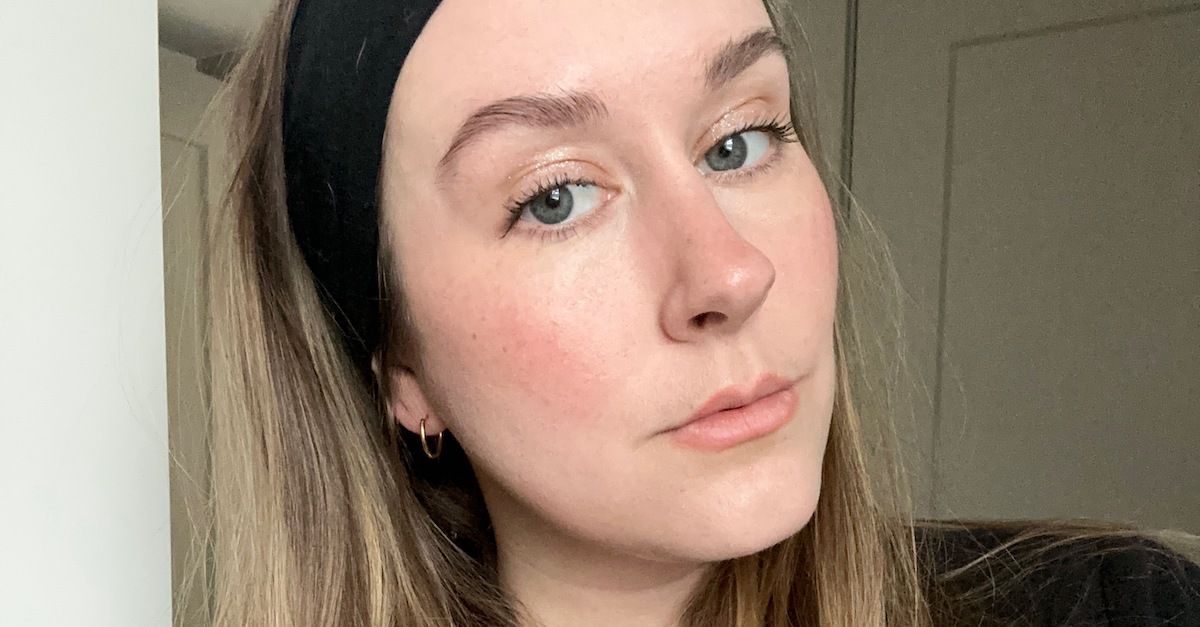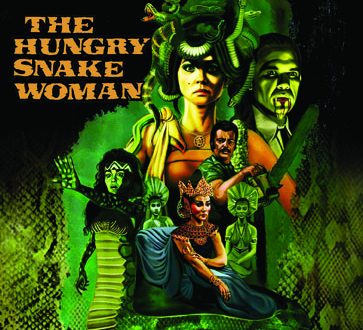It’s a big year for The Texas Chain Saw Massacre. The 50th anniversary of the events of the original film just passed on August 18th, and that same date commemorated one year since Gun Interactive released its asymmetrical multiplayer adaptation of the franchise. Numerous patches, new characters, new maps, and DLC have been released since then, and the game shows no sign of slowing down–a brand new gameplay mode is also on the horizon.
I caught up with head of Gun, Wes Keltner, to discuss all things TCSM, how the past year has been, what he considers canon in this chapter of the franchise he and his team have created, and how being one year into TCSM compares to how it felt being one year into Friday the 13th: The Game.
Portions of this interview have been edited and condensed for clarity and conciseness.
Bloody Disgusting: If you could describe the last year for you and your team in one word, what would it be?
Wes Keltner: I want to say chaotic because that’s game dev and that’s with any game, so that feels like a cop-out. The biggest word I would choose is validating. When we came out with Friday the 13th, Dead By Daylight had been on the market for about a year and asymmetrical horror was on its upward trajectory. I think Dead By Daylight went in a way that was competitive and we went in a way that was cinematic, and we had reached a point where we were asked “Well, what’s the next thing you’re going to do?” And I think a lot of people expected us to make a game similar to Friday the 13th–to go get another license and make the same game again.
But I don’t get out of bed every day to make the same thing–you want to push yourself and challenge yourself. So when we were approached from the rights holders of TCSM, not only was it the IP that we always wanted to work with, but it instantly got our attention because we knew we could try to change–in a small way–asymmetrical horror again, and introduced three family members vs. four victims. We hadn’t really seen as much success in shaking up that formula before. So it was validating to the team that not only did we know how to do a formula that’s one vs. seven, but that we also know how to do a formula that’s three vs. four. It showed that we’re not a one-trick pony, and that you can always count on us with the IP of any horror franchise that we’re entrusted with.
BD: How does one year into TCSM feel compared to being one year into Friday the 13th?
WK: We’ve learned so much since [Friday the 13th: The Game]. I can remember leading up to the beta of Friday that myself and the CEO of Illfonic, Chuck, would have these late night phone calls where we were discussing things like, “Do you think at least 10k people will show up to play? What’s a realistic number?” Not even dreaming that it would get even anywhere near the success that it had. But also, there were a lot of launch issues with F13. We went immediately from “Holy crap, this is a successful title,” to, “The wheels are falling off of this thing that we need to fix right now.” It was like elation to stress just like that.
Texas was a bit smoother. Our beta was smooth. It helped us get servers prepared for what we thought the amount of people were that were about to hit it, and we held it together pretty decently. We came out stronger technically–the game was more sound and the mechanics were a bit tighter. Going back to that feeling of validation I mentioned, I can say that there was fist-pumps in-house, not because we were like “Hey this is making money!” but because we were thinking “They said we couldn’t do this twice [and we did].” I can’t tell you how many meetings I had with folks in the video game industry that were like “A bit of what you did with F13 was luck.” And there’s something to be said about the right game, right time, that the stars aligned and I agree, but it was also just that it was a good game. So it’s a good feeling to be told “you can’t do that again,” and do it again. Make another hit game that people like that’s based on a horror IP and not do the same thing twice, but still do well.

BD: It seems like there’s much more of an open channel of communication now between your team and the fanbase/playerbase.
WK: When we launched F13, there were 3 people that worked at Gun. We’re up to 13 now, so it’s not one person doing 10 things at once. Now we can spread out, and things are a bit tighter now.
BD: What is your reaction to the online community that has formed around TCSM, and how do you balance your team’s goals with the feedback that you receive from the community?
WK: Anything that the fans are making, sharing, or discussing…I’m a fan of all of it, because they’re realizing that we’ve given them the tools to kind of make their own mini movie. We don’t have a rigid rule-set–it’s not linear. Everybody can play different roles to decide–will this be a very silly match? A serious match? A really scary match? There’s creativity in the people that are playing it, and when that spills outside of the game and someone’s still thinking about it and they want to make something, be it fan-art or an edit on TikTok, I’m like heck yeah, that’s really cool that they can express themselves through the thing that we made.
In terms of how we match the community’s goals with our own goals…that can be a difficult thing to approach. Because there’s expectations that are very difficult to meet. Without sounding egotistical or being like “I’m smarter than everyone else,” the IP holders entrusted Gun to make this game and we are obsessive compulsive over it. Every thought, idea, and detail is discussed ad nauseam by everyone at Gun. So I get that people want to make suggestions in our community, and I’m always for the discourse of people having ideas. The problem is that if I don’t listen to what they say of what should be in the game, it turns into some toxicity in the community that “the devs never listen.” I think a lot of games suffer from that, and it’s not that the devs don’t listen, it’s that…you haven’t been here from the beginning. You weren’t part of the creative team that had the vision that then birthed the idea into reality.
I understand that once your product launches, it’s not fully yours anymore–I do think there’s truth to that. And I think it would be foolish to not listen and have your ear to what’s going on in your community and how are people playing it. Because that’s the more interesting thing to me as opposed to what they say they want–and I’m not trying to say that what they say isn’t interesting–but I’m more tuned into how they’re playing it. Because I can often learn far more from how they’re playing it to realize that we should approach things one way because they might know to ask for a certain thing, but we look at how they’re playing and offer something that they think “Wow, I never would have thought of that.”
BD: I noticed a big conversation during one of the first major updates to the perks system that touches on this. There was a lot of conversation and even outrage about perks like Choose Flight being nerfed.
WK: If you’re seeing a lot of YouTube videos where it’s like “Here’s the new meta for this game,” that’s usually the canary in the mine that whoever is handling your meta-game system needs to re-look at whatever is the meta. Because if everyone is running it then it’s potentially too powerful and there needs to be something adjusted. It’s a funny situation because people make these videos and share them, everyone starts doing that thing, the devs catch on and dial it back, and then they’re like “Why would you do that!?” Well you shined a light on it!

BD: What are your thoughts on asymmetrical horror/asymmetrical multiplayer as a whole at this time?
WK: I think asymmetrical horror had a big resurgence around the time Dead By Daylight and Friday the 13th hit the market. I’ve seen a lot of other games come and go that are dabbling with asymmetry. The question is: is that because they weren’t designed well? Maybe? Maybe because they weren’t able to get that traction in their marketing? But another piece that a lot of people don’t talk about is the cost. It is incredibly expensive to have a live-service game with an active player base that you are constantly building and adding things to. It’s very hard to keep that going for a long period of time.
I hope that people push asymmetrical horror in more interesting ways that maybe dabble in some hybrid form where some facets of the game may be a single-player or cooperative, narratively driven thing–sort of like an Until Dawn experience–that then transforms into a lobby flow where there’s multiple people and a killer, and if you survive you pick up chapter two or so on. Those are the kind of conversations that I know we’re talking about and where this genre should be going. I think that mostly everyone would agree that while this genre has been around for a bit, it still seems to be in an infancy, and we need to take some broad steps forward so that it could spread itself out and find more subgenres within it.
BD: What are your goals for TCSM looking ahead in the next year? Can you tease what to expect with the upcoming Rush Week mode you’ve announced?
WK: A teaser trailer dropped earlier this week. I’m really looking forward to that mode because it goes back to what we previously discussed about being less interested in what players are telling me and more in how they’re playing. I can learn a lot from that, and that’s what started driving the conversation of a game mode where you’re playing the game differently.
The teaser gives you a vibe of mood, tone and what’s going on, but you’re not going to fully get it until we release a gameplay trailer which will come in the future. This game mode will allow us to stretch out a bit but still keep supporting the base game. And it lets us experiment and be influenced by things that aren’t necessarily The Texas Chain Saw Massacre. When we went to the rights holders and started talking about this idea, they were like well that’s kind of not Texas but it’s such an interesting idea that you should do it, and we were like “hell yeah.”

BD: There’s a lot of talk in the community about what’s considered the canon events within the game, from who dies to who the true final girl is. What’s canon to you?
WK: What’s canon to me is the notebook that Kim Henkel has sitting on his nightstand that we have access to. Everything that goes into the game is bounced off of him first and that’s what’s canon–when he blesses it and says “That’s a great idea.” When we’re looking for a character and we start combing through that book–I mean, Sissy was in there already, that was a character he had written maybe two or three years after the movie came out. That’s canon to us–the guardrails that Kim had already created and how he let us ride those rails and flex them out a bit. It’s good to have a partner like that. Maybe there’s a better way to say this, but he’s not business focused–he’s creatively focused. That makes a fantastic relationship for us at Gun because we all sort of speak the same language.
BD: The Texas Chain Saw Massacre just celebrated its 50th anniversary to much fanfare. What’s it like to work with such a beloved IP?
WK: It’s a profound responsibility and we feel that to our core because we’re not a studio that’s like “I just want this IP because it’s gonna make money.” Because if that were the case, I probably wouldn’t be looking in the horror genre–I’d probably be looking elsewhere trying to get Marvel or something. But we’re passionate about horror. So when that relationship is struck between us and whoever that [IP holder] is, and we’re setting off on this new adventure together…respect is the catch-all term there, but we want to make sure we do it right. Because if we were on the other side as the player, being the super horror nerds that we are, and some other studio gets the rights to something and makes a game, I would be very discerning, turning over every rock, does this look, feel, sound–am I immersed in the world of what this is supposed to be? Or could you take the IP out and stick another IP in and it’s the same game? That’s what makes Gun stand out.
The Texas Chain Saw Massacre is currently available on most major platforms, including PC, PlayStation 4/5, and Xbox One/Series X/S.
Preview the upcoming “Rush Week” game mode below.
The post Gun’s Wes Keltner Reflects on One Year of ‘The Texas Chain Saw Massacre’ and Previews What’s Next [Interview] appeared first on Bloody Disgusting!.


























































![Mason Ramsey – Twang [Official Music Video] Mason Ramsey – Twang [Official Music Video]](https://i.ytimg.com/vi/xwe8F_AhLY0/maxresdefault.jpg)





![Gun’s Wes Keltner Reflects on One Year of ‘The Texas Chain Saw Massacre’ and Previews What’s Next [Interview] Gun’s Wes Keltner Reflects on One Year of ‘The Texas Chain Saw Massacre’ and Previews What’s Next [Interview]](https://i0.wp.com/bloody-disgusting.com/wp-content/uploads/2024/08/tcm-1.jpg?resize=830%2C535&ssl=1)
















